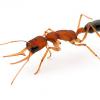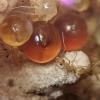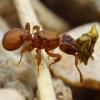Thanks for the detailed answers (and i'd love to get The Superorganism sometime!), but I'm asking more about the mechanism by which the ants make these decisions, and how it compares to human voting systems. Like, is it just the strongest and most abundant pheromone goes, or is there some voting hierarchy, how much of a say does an ant from a given caste or role have, or what?
It's not necessarily the best parallel, but have you looked into the research into honeybee dances? That might be analogous and give you some insights.
I think I understand what you're saying and I'm interested, too. I guess it may be like a computer program that's mostly genetic/epigenetic, with variable inputs such as current colony size, temperature, water, food, etc. But then, individual learning also has a role, like with the discussion of how ants teach each other information (such as how to reach foraging areas).
Past & Present
Veromessor pergandei, andrei, stoddardi; Novomessor cockerelli
Camponotus fragilis, Camponotus sansabeanus (inactive), vicinus, laevigatus/quercicola, CA02
Pogonomyrmex subnitidus, P. californicus (inactive)
Liometopum occidentale (inactive); Prenolepis imparis; Myrmecocystus mexicanus (inactive); Tetramorium sp. (inactive); Lasius sp.
Termites: Zootermopsis angusticollis, and a box of drywood termites that can't be seen
Isopods: (most no longer keeping) A. gestroi, granulatum, kluugi, maculatum, vulgare; C. murina; P. hoffmannseggi, P. haasi, P. ornatus; V. parvus, P. pruinosus, T. tomentosa
Spoods: (no longer keeping) Phidippus sp., other






















